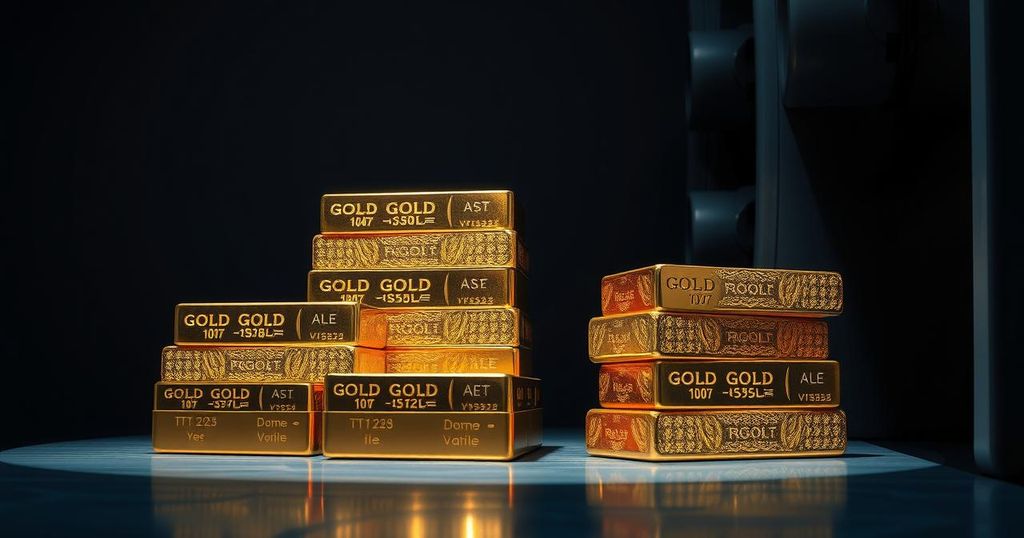Uzbekistan emerged as the ninth-largest gold buyer globally in 2024, purchasing 11 tons. Global gold demand reached a record 4,974 tons, driven by central bank purchases and investor interest. As gold production increased, the country’s strategy indicates a continued focus on building gold reserves amid economic instability.
In 2024, global gold demand hit a record 4,974 tons, marking a 1% increase from the previous year, with notable contributions from central banks and investor purchases. Uzbekistan’s gold production rose by 8%, largely due to heightened output from the Almalyk Mining and Metallurgical Complex (AMMC) and Navoi Mining and Metallurgical Company (NMMC). The country secured its status as the ninth-largest global gold buyer by purchasing 11 tons this year.
In November, Uzbekistan’s central bank, alongside Poland, emerged as one of the world’s top gold buyers. The World Gold Council observed that the decline in gold prices following the U.S. elections may have spurred many central banks to boost their gold reserves. For the third consecutive year, central banks collectively acquired over 1,000 tons of gold.
Notable buyers included Poland with 90 tons, Türkiye with 75 tons, and India at 73 tons. Additionally, investment demand surged by 25%, hitting 1,180 tons, while demand for gold bars and coins remained stable, and gold ETFs saw no significant outflows for the first time since 2020. In 2024, the average price of gold reached $2,300 per ounce, a 23% increase, peaking in the fourth quarter at $2,600 per ounce.
Overall gold production rose by 1% to 3,661 tons, while recycling increased by 11%, totaling 1,370 tons. The total gold supply reached 4,974.5 tons and demand increased to 4,553.7 tons, both reflecting a 1% growth year-over-year. Experts anticipate that demand for gold will remain strong in 2025, fueled by central bank reserve accumulation and investor interest during economic instability, though jewelry demand may weaken due to elevated prices.
Uzbekistan’s gold market will be shaped by various domestic macroeconomic factors, such as currency policy and inflation, as well as global export market conditions. With the ongoing trend of central banks enhancing gold reserves, Uzbekistan is likely to continue its strategy of accumulating this key asset.
The global gold market has seen a significant increase in demand, primarily from central banks and investors. Central banks purchased over 1,000 tons of gold for three years running, indicating a strong demand for gold as a reserve asset during economic uncertainties. This trend, alongside rising production rates in mining countries like Uzbekistan, reflects a broader shift toward gold as a financial safeguard.
Uzbekistan’s emergence as a leading global gold buyer underscores its strengthened position in the gold market. The country’s increasing production and strategic purchases highlight the trend of central banks bolstering their reserves in response to economic fluctuations. As global gold demand is projected to remain robust, Uzbekistan’s approach reflects an adaptable economic strategy focused on enduring financial stability.
Original Source: akipress.com






